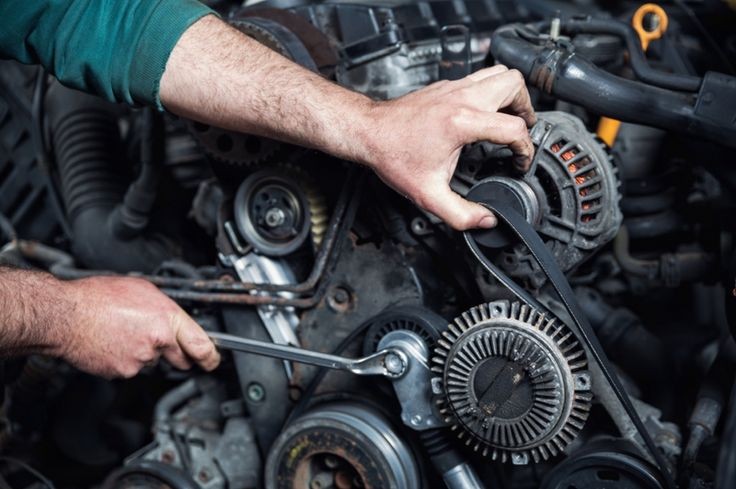
Certificate In Motorcycle Mechanic Training (CMMT)
By NCTA Team Last Updated: June 06, 2025Overview:
Certificate in Motorcycle Mechanic Training (CMMT) is a six-month program designed to equip individuals with the practical skills and technical knowledge required to service, repair, and maintain motorcycles. This course covers all essential aspects of motorcycle mechanics, from understanding engine components to diagnosing faults and performing repairs.
Students will learn how to work with various motorcycle models and systems, including the engine, transmission, braking, electrical systems, and suspension. Hands-on training in diagnosing mechanical issues, engine overhauling, and routine maintenance practices are key elements of the curriculum. The course also emphasizes safety standards, best practices in workshop environments, and customer service skills.
Course Curriculum:
The course is designed to meet industry standards, ensuring that graduates are ready to begin working in repair shops, dealerships, or even start their own motorcycle service businesses. Below is the detailed curriculum:
- Introduction to Motorcycles and Mechanics:
- Overview of motorcycle anatomy and types
- Basic mechanical principles applied to motorcycles
- Safety protocols in motorcycle mechanics
- Introduction to tools and equipment used in the workshop
- Electrical Fundamentals:
- Overview of electrical systems (battery, alternator, wiring)
- Motorcycle electrical components and circuits
- Fault diagnosis in electrical systems
- Battery maintenance, charging, and testing
- Engine Mechanics and Maintenance:
- Engine components and their functions
- Engine maintenance procedures (oil changes, spark plugs, filters)
- Carburetor and fuel system maintenance
- Engine troubleshooting and repairs
- Transmission and Drivetrain Systems:
- Motorcycle transmission types (manual, semi-automatic, automatic)
- Clutch, gearbox, and final drive systems
- Adjusting and maintaining the drivetrain
- Troubleshooting transmission faults
- Steering and Suspension Systems:
- Types of steering systems in motorcycles
- Front and rear suspension components
- Maintenance and repair of forks and shock absorbers
- Steering alignment and troubleshooting suspension faults
- Wheel Assemblies and Tires:
- Motorcycle wheel construction and types
- Tire types, installation, and maintenance
- Balancing and alignment of wheels
- Repairing and replacing tires and tubes
- Brake Systems and Maintenance:
- Overview of braking systems (drum, disc)
- Brake components and their functions
- Brake fluid checks, pad replacements, and adjustments
- Troubleshooting brake system faults
- Practical:
- Practical sessions on motorcycle assembly and disassembly
- Hands-on repair work on engines, electrical systems, and brakes
- Maintenance tasks such as oil changes, tire repairs, and electrical testing
Learning Outcomes:
Upon completing the Certificate in Motorcycle Mechanic Training (CMMT), students will be able to:
- Diagnose and repair various motorcycle systems, including engines, electrical components, and transmission systems.
- Perform routine maintenance tasks, such as oil changes, brake servicing, and tire replacements.
- Troubleshoot and resolve mechanical issues related to steering, suspension, and electrical wiring.
- Understand and apply safety protocols in a workshop environment.
- Maintain and repair advanced motorcycle systems, including fuel injection and electrical systems.
- Work efficiently with tools, equipment, and diagnostic machines used in motorcycle servicing.
- Provide excellent customer service and communicate effectively with clients regarding motorcycle repairs and maintenance.
Career Opportunities:
After completing the Certificate in Motorcycle Mechanic Training (CMMT), graduates can explore a wide range of career opportunities in the motorcycle repair and maintenance industry. Potential career paths include:
- Motorcycle Mechanic: Work in motorcycle repair shops or service centers, handling repairs, maintenance, and performance tuning for motorcycles.
- Motorcycle Service Advisor: Assist customers with service inquiries, maintenance recommendations, and ensure smooth operations in motorcycle dealerships.
- Motorcycle Technician: Specialize in diagnosing and repairing complex systems in motorcycles, including electrical, engine, and transmission systems.
- Freelance Mechanic: Start your own motorcycle repair business, providing on-site services or setting up a dedicated repair shop for motorcycles.
- Performance Tuning Specialist: Work with high-performance motorcycles, focusing on modifications, tuning, and upgrades to enhance the bike's performance.
- Parts & Accessories Specialist: Focus on the installation and maintenance of aftermarket parts and accessories, advising customers on upgrades and replacements.
Salary Expectations:
Graduates of the Certificate in Motorcycle Mechanic Training (CMMT) can earn between $25,000 and $45,000 annually as mechanics, with more experienced professionals earning higher salaries. Service advisors typically earn $30,000 to $50,000, while workshop supervisors make $40,000 to $60,000. Motorcycle technicians earn $30,000 to $50,000, and freelance mechanics can earn between $30,000 and $70,000. Performance tuning specialists make $35,000 to $60,000, and parts specialists earn $30,000 to $50,000. Salary growth depends on experience, specialization, and market demand.
Course Features
| Course Code | NCTA-174 |
| Duration | 6 MONTHS/260 HOURS |
| Category | Certificate In Motorcycle Mechanic Training (CMMT) |
| Eligibility | ALL LEVELS |
| Fees | INR(₹) 8000.00/ USD($) 230 |
Semester-wise Subjects & Study Preview
-
Motorcycle BasicsLearn Motorcycle Basics to master engine types, motorcycle systems, and essential maintenance practices for safe and efficient riding.
-
Motorcycle TechnologyLearn Motorcycle Technology to master engine systems, diagnostics, and technological innovations for modern motorcycles.
-
Motorcycle Electrical SystemsLearn Motorcycle Electrical Systems to master wiring, battery management, and electrical diagnostics for efficient motorcycle operation.
-
Motorcycle MaintenanceLearn Motorcycle Maintenance to master servicing procedures, troubleshooting, and preventive care for reliable and long-lasting motorcycle operation.
-
Basic Electronics and Electrical PrinciplesBasic Electronics and Electrical Principles explores circuit theory, electronic components, and foundational principles for electrical and electronic systems.
-
Practical
To know more about our this course, feel free to call us at:
+91 9733600770
